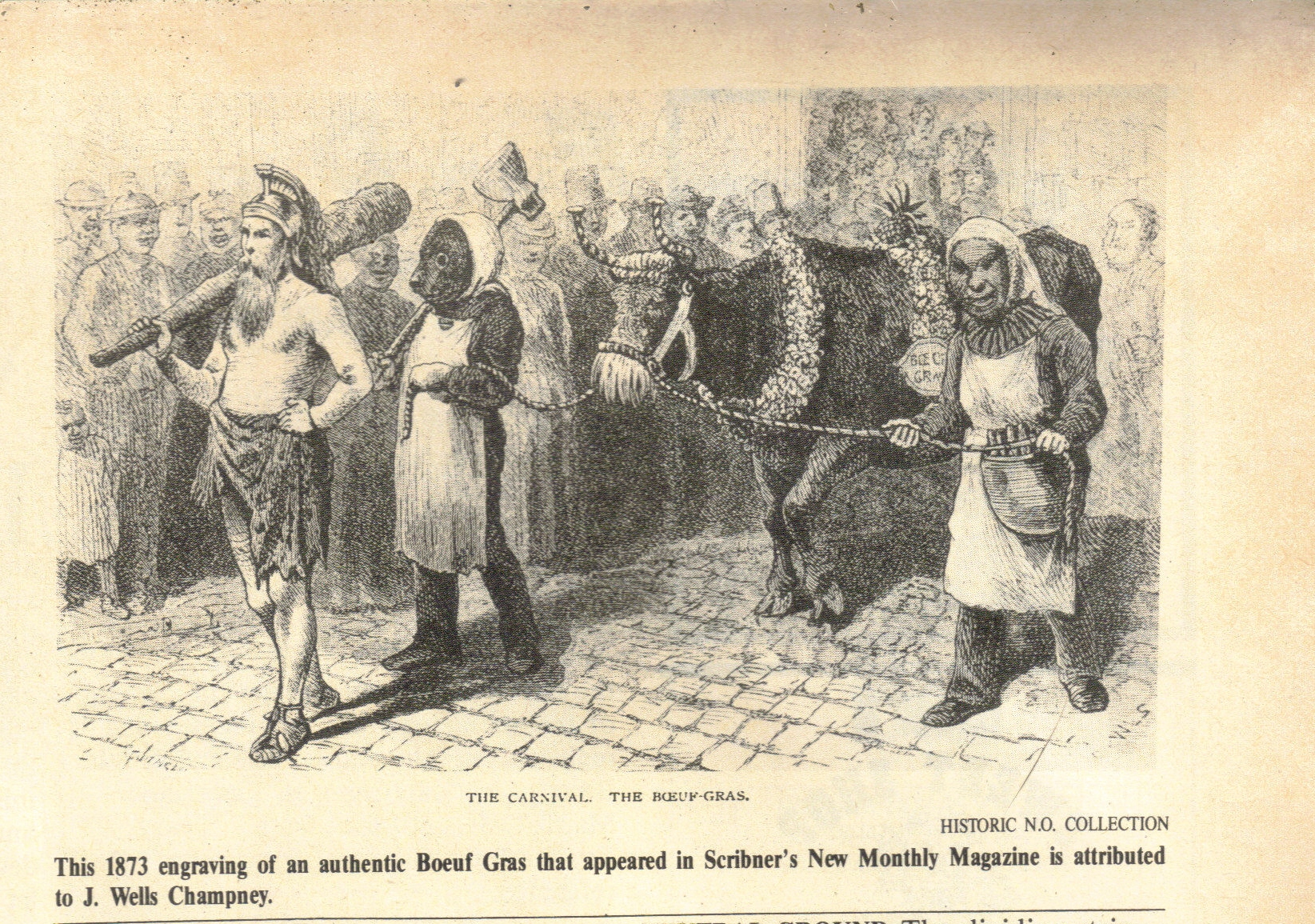Mardi Gras Glossary
 ANODIZED A method of coating a plain aluminum doubloon with a color by dipping the doubloon in an electrolyte bath.
ANODIZED A method of coating a plain aluminum doubloon with a color by dipping the doubloon in an electrolyte bath.
BEIGNET A square, fritter-like doughnut without a hole, fried in hot oil.
BOEUF GRAS “Fattened ox” in French. the Boeuf Gras symbolizes the last meat eaten before the start of Lent.
CARNIVAL The season of merrymaking beginning twelve days after Christmas and ending with Ash Wednesday.
CAFE AU LAIT Coffee prepared with one half hot milk.
DEN A warehouse used to store and build parade floats.
DOUBLOON A type of throw, an aluminum coin with the emblem of the issuing organization embossed on one side and the theme of the parade on the order. 2009 is the 50th anniversary of the Mardi Gras Doubloon, invented by Alvin Sharpe.
FLAMBEAU The traditional device for illuminating Carnival parades, a metal torch fules with naphtha (a petroleum product). Plural- Flambeaux.
KING CAKE A doughnut shaped cake decorated with purple, green and gold icing and/or colored sugar. King Cakes are a major food tradition of Carnival in New Orleans.
KREWE A Universal term for Carnival organizations, coined by Comus in 1857.
MARDI GRAS French for Fat Tuesday, also known as Shrove Tuesday. The culminating day of the Carnival festivities.
MEDALLION A type of throw, a necklace with a pendant bearing a Krewe’s emblem.
NEUTRAL GROUND The dividing strip of ground, usually planted, between the two sides of a large street.
PARISH the Louisiana term for county.
THROW Any trinket tossed from a Carnival parade float to spectators, the most common being plastic beads and plastic cups. Stuffed items are very popular- stuffed animals, swords, figures, etc.
VIEUX CARRE French for “Old Square”, the French Quarter.
Leave a Reply